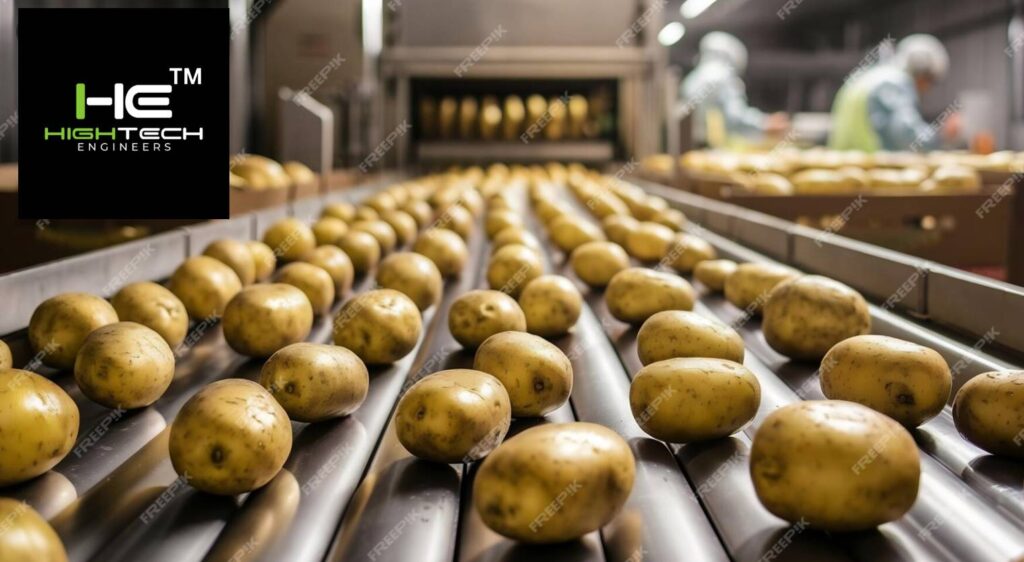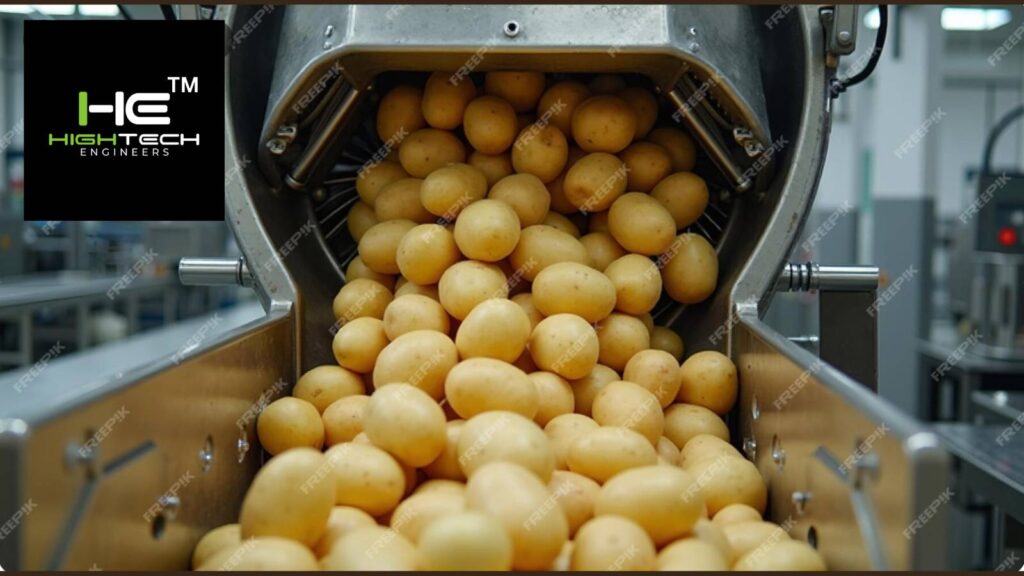The Future of Potato Grading: How Robotics and AI Are Revolutionizing the Industry
The Future of Potato Grading: How Robotics and AI Are Revolutionizing the Industry

The potato grading industry is undergoing a technological revolution. As global demand for higher efficiency and better quality grows, cutting-edge innovations in robotics, computer vision, and artificial intelligence are transforming traditional grading methods. Here’s an in-depth look at the future trends shaping potato grading technology.
1. Next-Generation Computer Vision Systems
Modern grading machines are moving beyond basic size sorting to advanced visual inspection:
- Hyperspectral imaging detects internal defects and chemical composition
- 3D depth-sensing cameras measure precise shape and volume
- Multispectral analysis identifies starch content and dry matter percentage
- Real-time processing at 200+ frames per second
Impact: Achieves 99.9% defect detection accuracy, surpassing human capabilities
2. AI-Powered Quality Control
Artificial intelligence is taking potato grading to unprecedented levels:
- Deep learning algorithms that improve with every potato scanned
- Predictive quality assessment estimating shelf life and cooking quality
- Automated calibration adapting to different potato varieties
- Cloud-based knowledge sharing between machines worldwide
Example: Systems can now identify early signs of bruising that would only become visible days later
3. Collaborative Robotics in Grading Lines

The latest developments in agricultural robotics include:
- Soft-grip robotic arms for gentle handling of delicate potatoes
- Mobile grading robots that work alongside human operators
- Self-cleaning end effectors that prevent cross-contamination
- Force feedback systems that adjust grip pressure in real-time
Advantage: Reduces mechanical damage to under 0.5% compared to traditional methods
4. IoT-Connected Smart Grading Systems
The Internet of Things is enabling:
- Remote performance monitoring from any device
- Predictive maintenance that schedules service before breakdowns
- Energy optimization adjusting power use based on load
- Blockchain integration for complete supply chain traceability
Benefit: Reduces downtime by up to 70% through smart diagnostics
5. Autonomous Mobile Grading Units
Emerging technologies include:
- Self-driving grading vehicles for field-side processing
- Swarm robotics with multiple coordinated grading units
- Solar-powered operation for off-grid use
- Automated loading/unloading systems
Application: Allows grading immediately after harvest while preserving freshness
6. Advanced Sorting Algorithms
New software capabilities feature:
- Multi-parameter decision matrices (size + weight + color + defects)
- Dynamic quality thresholds adjusting to market demands
- Genetic algorithm optimization for perfect grade boundaries
- Neural network classifiers that recognize 50+ defect types
Result: Achieves grading precision of ±0.5mm and 0.1g accuracy
7. Sustainable Grading Technologies
Eco-friendly innovations include:
- Waterless cleaning systems using air vortex technology
- Biodegradable lubricants for conveyor systems
- Energy recovery systems capturing kinetic energy
- Modular designs for easy upgrades instead of replacement
Sustainability: New models use 40% less energy than previous generations
8. Human-Machine Interfaces (HMI)
Operator experiences are being enhanced with:
- Augmented reality maintenance guides
- Voice-controlled operation
- Haptic feedback controls
- Virtual reality training simulations
Usability: Reduces training time from weeks to days
9. Integration with Smart Farming Systems
Future grading machines will connect to:
- Yield monitoring databases
- Soil condition analytics
- Climate control systems
- Automated storage facilities
Synergy: Enables complete crop quality optimization from planting to market
10. Customizable Grading Solutions
The future offers:
- Plug-and-play sensor modules
- Pay-per-use cloud grading services
- Leasing options for small farms
- Custom algorithm development
Accessibility: Makes advanced technology available to farms of all sizes
Implementation Roadmap
For farmers considering these technologies:
- 2024-2025: Adopt basic computer vision systems
- 2026-2027: Integrate AI quality control
- 2028-2030: Implement full robotic grading lines
Leading manufacturers like Hi-Tech Grading Machines are already incorporating many of these features in their newest models.
The Bottom Line
The future of potato grading will be:
✔ More accurate than human grading
✔ More efficient than current machines
✔ More sustainable than traditional methods
✔ More profitable for forward-thinking farmers
Early adopters of these technologies will gain significant competitive advantages in the coming decade. The question isn’t whether to upgrade, but how soon you can implement these innovations in your operation.
